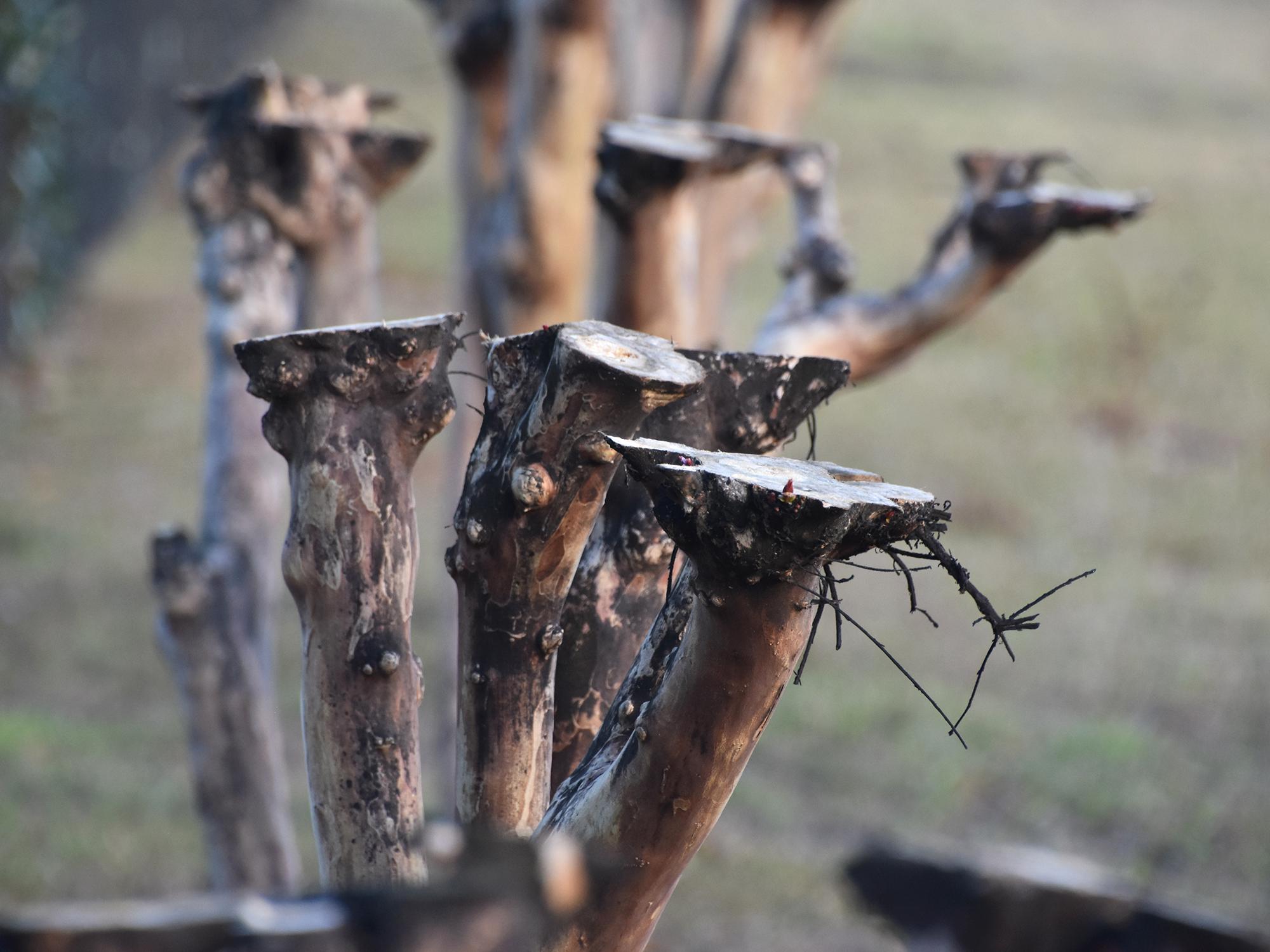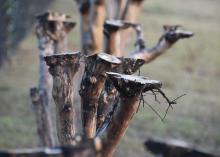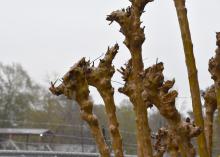Information Possibly Outdated
The information presented on this page was originally released on January 1, 2018. It may not be outdated, but please search our site for more current information. If you plan to quote or reference this information in a publication, please check with the Extension specialist or author before proceeding.
Crape myrtle upkeep does not include murder
As gardeners make New Year’s resolutions for their landscapes in 2018, I want to encourage all of them to resolve to correctly prune crape myrtles from this day forward.
In the current vernacular, severe pruning of crape myrtles is called “crape murder,” reflecting the seemingly random nature of the pruning cuts. To me, this type of pruning is very unattractive in the landscape.
But first, I’m going to play devil’s advocate concerning crape murder.
The practice of severely cutting crape myrtles back is actually an old pruning practice called pollarding, which is used to control the size of large trees. Trees such as oak, elm, tulip popular and sycamore that normally grow to 100 feet tall can be cut back to 20 or 30 feet so they can grow in a restricted planting area. Annually pruning these large trees at the same location results in the formation of knobs of tissue, called pollard heads.
Pollarding was never intended to maintain the size of a crape myrtle to make it 5 feet tall with pollard knobs.
The trouble happens because crape myrtles are extremely resilient. Since they bloom on the current season’s growth, bad pruning is glossed over annually. But just because you can do something doesn’t make it right.
To be clear on this, I don’t have any issues with homeowners who like the look of pollarded crape myrtles. My reason is simple: These crapes are being severely pruned with a purpose.
I save my objections for gardeners who murder their crapes because they think that is the proper way to control the trees’ size. This misconception is reinforced as many professional landscape maintenance companies handle crape myrtle size in this way.
These gardeners are not consciously practicing the ancient art of pollarding. They are following this practice because it’s a lot quicker and can be done with laser precision. Zip, zap and they’re off to the next job. Homeowners see this and assume if the professionals are doing it, then it must be correct.
Heavy pruning does control the size of the crape myrtle, but it can’t be used to control shape. In fact, pollarding destroys the tree’s natural form. Crape myrtles have a range of natural shapes available, depending on the variety selected.
The main problem with the extreme pruning of crape myrtles occurs when someone has planted a large-growing variety in a space better suited to a small-growing tree. One old adage says the “wrong plant is in the wrong place.” Another that applies and here is “two wrongs do not make a right.”
If crape myrtles are correctly sized for the planting location, they do not need major pruning every year. However, every crape myrtle does need minimal, selective pruning to remove seed heads and tidy up the tree up by occasionally removing misshaped or damaged branches.
When selecting a crape myrtle for your landscape, consider the mature size you want, and wisely choose a selection that meets those criteria. For example, if you want a white-flowering crape myrtle, there are many different varieties you can choose with varying mature heights: Pixie White, 3 feet; Delta Moonlight, 10 feet; Acoma, 14 feet; Byer’s White, 20 feet; and Natchez, 30 feet.
For more information on the proper care -- this includes pruning -- and feeding of crape myrtles for Mississippi landscapes, see Mississippi State University Extension Publication 2007, “Crape Myrtle: Flower of the South,” http://extension.msstate.edu/publications/publications/crapemyrtle-flower-the-south.
Now I’ll get off my soapbox and wish everyone a fantastic year in their gardens.





